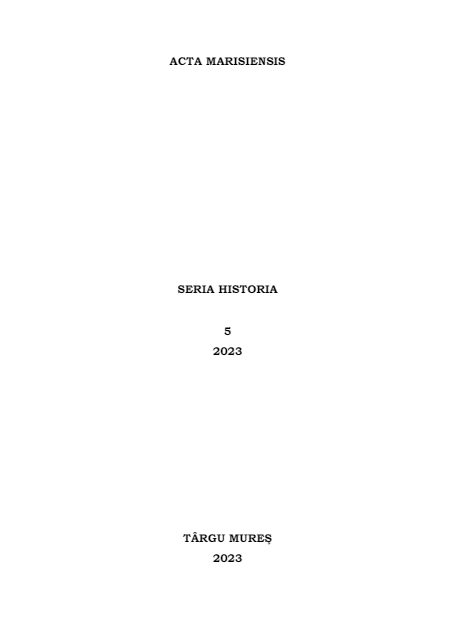MEMORIE ȘI PROPAGANDĂ ÎN DOBROGEA DE SUD: STATUI REFUGIATE, RELOCATE ȘI DISPĂRUTE (1940-1944)
REMEMBRANCE AND PROPAGANDA IN SOUTHERN DOBROGEA: SHELTERED, RELOCATED AND DISAPPEARED STATUES
Author(s): Florin AnghelSubject(s): Museology & Heritage Studies, Military history, Political history, WW II and following years (1940 - 1949), Politics of History/Memory
Published by: Editura University Press, Universitatea de Medicina, Farmacie, Stiinte si Tehnologie “George Emil Palade” din Targu Mures
Keywords: Southern Dobrogea; places of memory; Queen Marie; King Ferdinand; Balchik; Bazargic; Silistra;
Summary/Abstract: There were only a few places of memory in Southern Dobrogea after the First World War and the reintegration of the province into Romania. Most of them lacked artistic value and provided insignificant information. These statues, placed in some public squares of the province’s cities, received limited funding and little attention from artists. Little and fragmented information has been written about these monuments of Romanian memory in Southern Dobrogea. The main causes for this are linked to the marginality of the province in the governmental objectives and its negligible impact on the assessment of Romanian nationalistic identity values. Additionally, there were few publications in Southern Dobrogea, which had little cultural impact in the Romanian national context and a short existence. From 1919 to 1940, there was no tradition of cultural institutions, nor were there any memorials for wars or public figures. It was not until 1927, with the inauguration of a small statue of King Ferdinand in Bazargic (now Dobrich/Dobrici), that any public monuments appeared throughout Southern Dobrogea. An important part of the Romanian communities from Southern Dobrogea was established after the First World War by invinting the Balkan Romanians from South-Eastern countries. They shared the Romanian language and culture but had little connection with the recent historical memories of natives in Romania, including the Independence War of 1877- 1878 or the First World War and the formation of the so-called Greater Romania (România Mare) in 1918. The sacrifices, the German/Bulgarian occupation of Dobrogea, the losses, and the heroes of the First World War were primarily associated with the native population, although the Romanians from the Balkans were also exemplary citizens and contributors. These native groups, excluding Bulgarians and Turks/Tatars, were a minority in all local or national censuses from 1918 to 1940. Therefore, Romanian places of memory (statues and cemeteries) in Southern Dobrogea were respected but did not hold the same emotional significance for the community as they did in other provinces of the country. Only one of all the statues from Southern Dobrogea has been preserved until today: the statue of Queen Maria from Balcic, erected in 1933. It was relocated in September 1940 and is now situated in front of the Museum of Art in Constanța.
Journal: Acta Marisiensis. Seria Historia
- Issue Year: 5/2023
- Issue No: 5
- Page Range: 67-99
- Page Count: 33
- Language: Romanian

